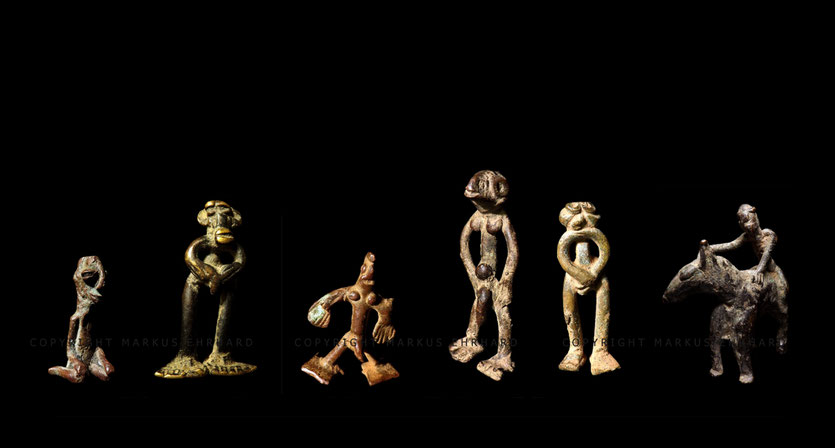
In case you collect Senufo sculptures, sooner or later you come along small quirky figures:
They are called Gniniguefobele, small bronze, bras or, since 1950, aluminium statues casted in lost wax technique. They are created by the Fono, Senufo black smithers, in large quantities. Their size is between 2 cm to 10 cm.
The Sando deviner hands these statues to a person who needs protection as a kind of medicine. Sometimes a person wears a whole bunch of these spirits as a bracelet, anklet or in a small leather pouch, sometimes a person wears only one as a necklace. They stay with an owner for his whole lifetime. Also they are devices for the deviner itself. These little statues belong to the Tugubele, but are an own genre of spiritual meaning and have an enormous spiritual power.
Also there are animals as statues or pendants, like the chameleon or the turtle, or miniatures of anklet jewelry with the same meaning and power.
The Senufo statues and masks are known for beeing very elegant. These little guys are everything else than beautiful. It would be possible to create a more distinguisehd, a more graceful figure. But in this case, the Gniniguefobele, are not ment to be human or humanlike. They are an idea of how a spirit could look like with forceful power. It is not an abstraction of the human body.
There are many voices in the collectors scene who are very quick in saying, that these statues are made for selling as Airport-art. There are larger statues casted in metal made for selling. But there is such a huge demand handing out these spirits to people, who need their power, that in most cases you will find an authentic piece. Generally they are not valued in the collectors scene, because they are not beautiful. After usage, they usually get sold. You can find them on trade markets even in Kenia. Prices range from € 10,- up to € 100,- per statue.
Gniniguefobele statues published in:
Wenn Urform Form bestimmt, Markus Ehrhard, 2016. Seiten 78 - 85.

